
In this post, John Conrad explains how he makes rollers out of furniture casters. What a great idea!
People have used rolling stamps on pottery forms for centuries. A similar, but ready-made texture tool is a cogwheel, which was used to make bands of subtle texture circling on 15th-century German steins. Early English ceramic tankards have roller marks around the bottom and top edges, and early Japanese clay sculptures also have decorative texture designs rolled on.
A furniture caster can be an effective tool for creating interesting textures by altering the wheel’s surface so it essentially becomes a rolling stamp. Various size commercial casters are available, ranging from ¾–4 inches in diameter and made of rubber, plastic, metal, or wood. The advantage of the commercial caster is that it has a firm metal handle to hold when rolling it against the clay, and it’s inexpensive and readily available. The unaltered roller can make several different designs based on the angle of the roller as it’s pressed against the clay, producing a narrow V shape, wide band, or wave patterns (if tilted back and forth while rolling).
The face of the wheel can be altered by cutting, grinding, filing, sawing and/or sanding various forms to create texture patterns. The plastic wheels are often too thin to be deeply carved or cut and the metal wheels are difficult to work with unless you have the right tools. I’ve found that rubber and wood are the best media to work with to shape and cut. Drills, files, rasps, an electric power sander, small hacksaws or jeweler’s saws, bench grinders, chisels, other hand tools, and rotary tools (with cutting, sanding, and grinding tips) work well to reshape and alter the wheel.
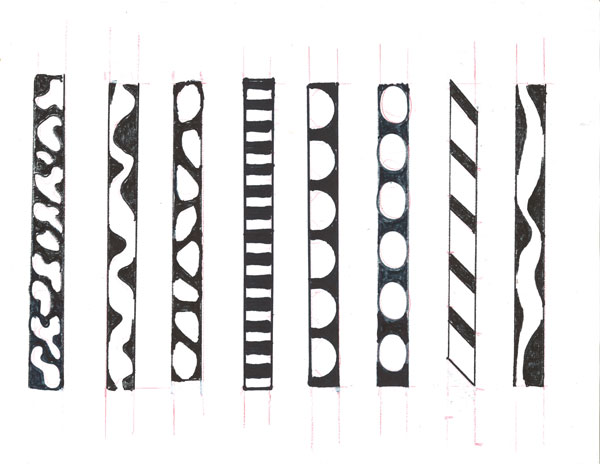
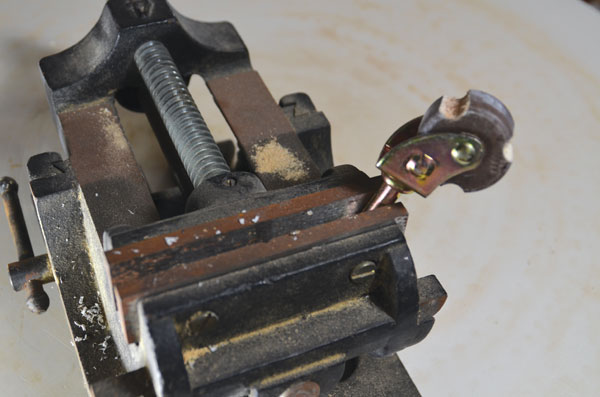
Make scale drawings of potential patterns (figure 1). Tip: For ideas, check out the Pottery Illustrated article on roulette patterns in the September/October 2011 issue of Pottery Making Illustrated. The drawings in figure 1 show the possible designs that can be made on the clay. Next, using carbon paper or another transfer material, trace the design onto the caster wheel when you’ve settled on a pattern.
Once the design is transferred, use a marker to completely fill in all areas on the wheel that need to be removed. Black areas become voids or negative space on the roller, but will be raised areas when used on clay. Use a vise to hold the wheel steady as you work, Carve away the marked sections using a combination of power tools and hand tools (figure 2), then use sandpaper and files to finalize and smooth the form. Take care not to create any undercuts as you carve, these areas will tear the clay as it gets stuck in the roller, or make the pattern incomplete. Make tapered cuts rather than straight cuts into the wheel to avoid undercuts. This works to create a variety of patterns, from simple to complex (figures 3&4).
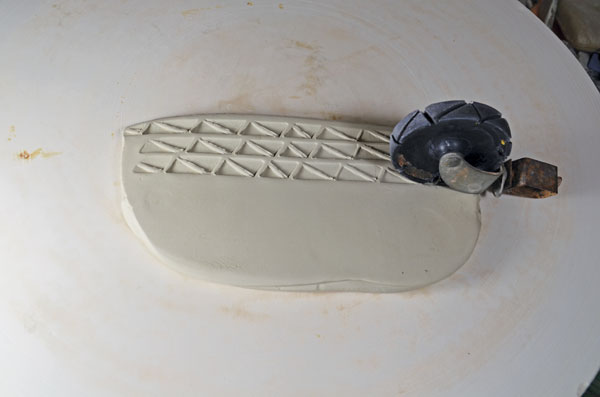
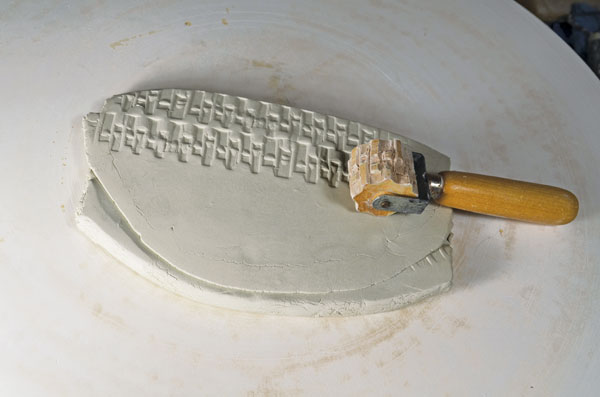
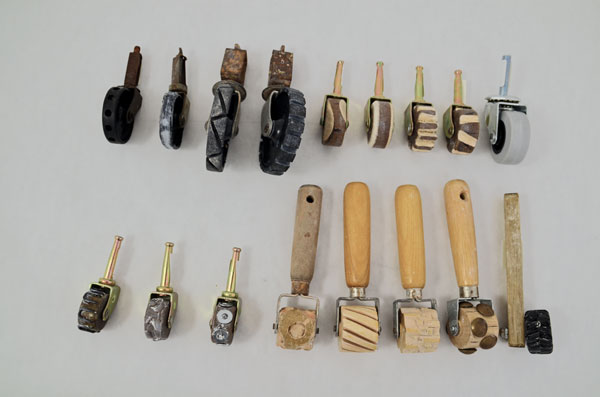
A second way to give the wheel texture is to attach items like decorative upholstery nail heads to the roller. Pound or glue the nail head onto the rubber or wood wheel surface. Grind the nail head to fit the curved surface of the roller. A variation is to epoxy decorative buttons, nuts/bolts/rivets, sections of old truck inner tubes, bike tires, or other items to the wheel.
Using hot glue to create raised textures and patterns on the roller is a third way to construct design This is useful to create tree bark, lace, rock, and zigzag patterns.
Sculptural forms, thrown shapes, or flat platters have surfaces that can be decorated using the caster with or without texture. Patterns range from the very simple line or dimple to big and bold slashed patterns (figures 5). Once glazed (transparent glazes work best) the three-dimensional patterns give additional visual interest.
John W. Conrad lives in San Diego, California. He is the author of nine technical ceramics books and several articles for ceramic artists and potters. He is a retired professor and now a guest professor at Luxun Academy in China.






